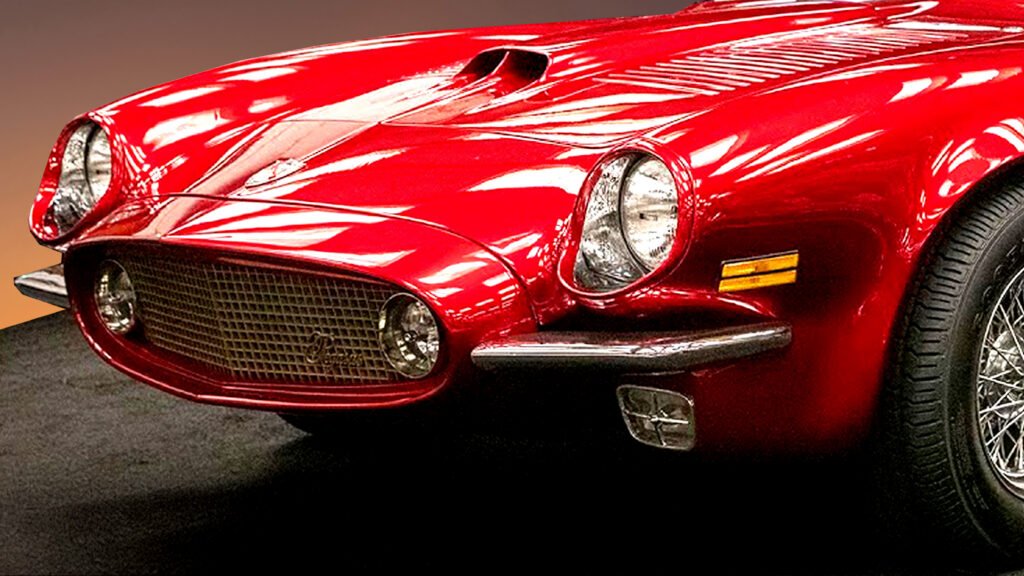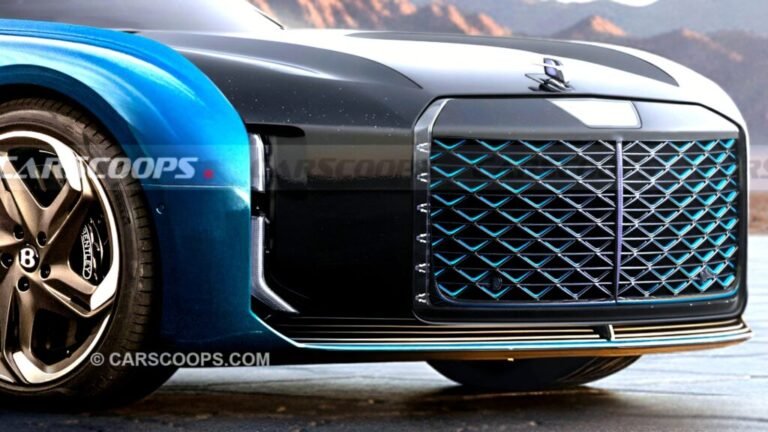

- A Pontiac Firebird with a Ferrari V12 lurks in GM’s heritage collection.
- The 1971 concept showcased future Camaro / Firebird design features.
- Ferrari donated a 347 hp 4.4-liter V12 from the 365 GTB/4 Daytona.
Take a look at GM’s second-generation F-body duo, the 1970 Chevy Camaro and Pontiac Firebird, and it’s hard not to see the influence of Ferrari’s classic 250 GT SWB in their curves. The proportions, the sweep of the roofline, the taut stance, all of it feels like Detroit borrowing a few pages from Maranello’s playbook.
Also: This DeLorean Just Got A Ferrari V8 And Is Finally Ready To Roar
Yet few know that, behind closed doors, GM’s designers actually developed a secret F-body concept where the “F” really did stand for Ferrari. Under its hood sat a genuine V12 from Italy, not a small-block from Flint.
It was the called the Pegasus – winged horse, geddit? – and its story starts with Jerry Palmer, a young Chevrolet stylist who sketched out some sleeker, more European design cues for a future Camaro based on the then-new 1970 coupe.
How Did It All Begin?

Legendary GM design chief Bill Mitchell saw those drawings and, in classic corporate fashion, swiped the ideas for Chevy’s sportier brother Pontiac instead. The result was a 1970 Firebird that ditched Trans Am flash for European glamour and sophistication.
It’s OTT compared with a stock Firebird, no question, but it genuinely looks like it was created by a famous Italian coachbuilder for some wealthy shipping magnate in Milan, not by a bunch of American boys in Detroit.
It wasn’t all smoke and scoops, either. Under that seductive red body sat the heart of a Ferrari 365 GTB/4 Daytona, a 347 hp (352 PS) 4.4-liter V12 apparently donated by Ferrari itself.
A Clash of Cultures Under the Hood

GM engineers crammed the exotic powertrain between the Firebird’s fenders by moving the firewall back 9 inches (230 mm), but then tried to mate it with a GM three-speed automatic that proved a poor sidekick for a highly-strung six-carb V12 designed to work with a five-speed manual.
These days Pegasus runs a slightly more tractable 365 GTC/4 V12 and a proper Ferrari manual transmission, and in later years the original gold pintsriping was unfortunately removed. But the core design features, some of which would appear on production Chevys and Pontiacs throughout the 1970s, are still present.
The Testa Rossa Connection
Most obviously there’s a 250 Testa Rossa-style pout, which originally was modified from Palmer’s first sketch to incorporate Pontiac’s trademark grille divider. That feature was later removed while the car was being repaired following the first of at least two crashes that happened when Mitchell was behind the wheel.
And then there’s the vented hood with its narrow central bulged scoop designed to clear the bank of velocity stacks poking from the 12-cylinder engine’s vee.
GM
Rear disc brakes – never offered on the second-gen F-body – come via the Corvette, but the center-bolt wire wheels are not cheap Detroit-spec wire-effect hub caps, but the real deal and made by Borrani, Ferrari’s own supplier.
Recognize any of those tricks? The semi-recessed headlight theme would appear on both the production Camaro and Firebird for 1974 and the wraparound rear window that massively improved rear visibility made it to showrooms the following year.
And while the F-bodies never got this concept’s razor-thin tail, it did show up on the new-for-1973 Pontiac Grand Am and Le Mans, though the effect was ruined a season later by the ugly, federally mandated 5 mph (8 km/h) bumpers.
Real Leather, Real Ferrari Gauges

Inside, Mitchell’s personal touches turned the cabin into something between a Ferrari GT and a GM dream car. Bar a bulge directly behind the wood-rimmed wheel, the basic dashboard shape is Firebird through and through, but is home to a Ferrari’s gauges and swathed in rich leather, not the usual plastic and fake-wood vibe you’d expect from 1970s Pontiac.
Motor Trend’s Frank Markus was lucky enough to get behind that wheel in 2006, where he discovered a driving experience as mixed up as you’d expect. The over-light power steering and crude live-rear-axle ride was pure Detroit, but the sound unmistakably Ferrari.
And even if it didn’t feel quite as quick as the 1,000 lbs (450 kg) lighter Daytona, it was still capable of shaking the rear tires loose in third.
Pegasus reportedly stayed with Mitchell after his retirement in 1977, and until his death in 1988. Today it lives in GM’s Heritage Collection as a reminder of how designers can “learn” from each other, and also the crazy amount of sway Mitchell had at the company during the 1960s and early ’70s.
Can you imagine Ford’s current design boss Todd Willing commissioning a Ferrari 12Cilindri-powered Mustang S650 just because he thought it was a cool idea?


